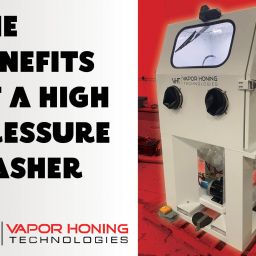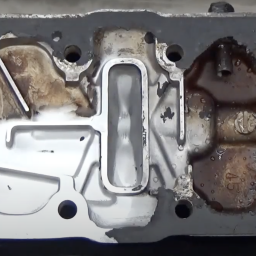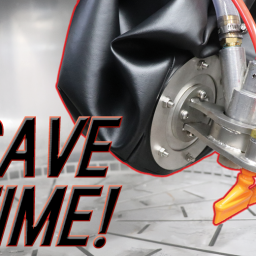Waterblasting vs Sandblasting: The Ultimate Showdown
When you are painting or treating a surface, you want it to look great and last for as long as possible read on to find out more about waterblasting vs sandblasting.
That’s why you can’t forget about surface preparation of the substrate.
Surface preparation is one of the most important things that will affect the quality of your project. Good and thorough preparation will mean that your paint or treatment is high quality, performs well, and is long-lasting. There are many reasons to choose water blasting vs sandblasting and some say that ones better than the other for certain applications.
But what does surface preparation involve? It means that the surface needs to be clean. Plus, the pores of the surface need to be open and ready to absorb the paint or treatment that you’re applying.
There are two ways to prepare your surfaces. You can use waterblasting vs sandblasting.
But what’s the difference between waterblasting vs sandblasting? Keep reading to find out more, and then you can decide which method is best for your particular project.
What Is Waterblasting?
Waterblasting is a very popular and effective way to prepare surfaces for painting or treatment.
Waterblasting is a way to clean, prepare and maintain surfaces. It is an efficient, economic, eco-friendly, and safe method that can be used on almost any type of surface and in many different environments.
The waterblasting process works by using pressurized water mixed with abrasive to clean the surface that is going to be painted or treated. The powerful water and abrasive mixture removes any dirt or debris and opens the pores of the surface. This means that new paint or treatment that is applied will stick better; have a higher quality finish, and will last for longer.
The Benefits of Waterblasting
There are many benefits and advantages of waterblasting.
Waterblasting is used to clean and prepare a huge range of surfaces. It’s easy and safe to use on almost any project.
When you are waterblasting, you can increase or decrease the pressure of the slurry that you are using. The ideal pressure depends on the type of surface that you are working with and preparing. This ability to adjust the water pressure means that you will not damage the surface by waterblasting it too violently. You can adjust the pressure to make sure that the surface is properly cleaned.
Things to Know
The water and abrasive mixture usually comes through a blasting nozzle. You have the option of using different sizes of nozzles.
The nozzle size that you choose will depend on the size of the job that you are working on and your air compressor capabilities. For example, if you are running jobs that take weeks to complete like re manufacturing engine blocks or transmissions then you would want to use a large nozzle with your machine for more output. However, if this is a hobby for you then the exact opposite would be true.
Waterblasting is a safe method to use. It allows you to clean and prepare surfaces without using any chemicals, and the process doesn’t release any unsafe toxins or dust into the air.
It also leaves no residue behind. This means that no rinsing is required after you are finished. As soon as the surface is dry, it will be ready to paint or treat.
Another advantage of waterblasting is that it leaves a fine finish on your surface. Any sediment or abrasive material is washed away by the water leaving no media on the surface. This means that your surfaces are left clean and ready to work on.
Waterblasting is also the preferred method when you are trying to preserve a surface or material. This is because the process does not embed abrasive into the surface. So, its unlikely to cause any type of damage to the part being blasted. It also has less impact on the surface, especially when compared to sandblasting. This reduces the risk of any surface deterioration, damage, or destruction to your surface or material.
How We Can Help You
A professional can use waterblasting equipment safely, easily, and effectively to prepare a surface. If you try to use equipment without proper training, it is possible to properly clean or prepare your parts. Therefore, a trained eye will be needed for the final project to be a success.
Contact us now if you need to clean and prepare a surface or if you need help in determining what machine is best for your needs. We can make sure that your project will be a success no matter if we help you with the blasting of your parts or we supply you a machine.
What Is Sandblasting?
Sandblasting is another way to prepare surfaces for painting or treating. This abrasive commonly thought of as sand is propelled at a surface at a very high speed. The abrasive acts like sandpaper, scraping away any excess materials and smoothing the surface.
There are two types of sandblasting; wet and dry. Wet sandblasting is when sand and water propel together. Dry sandblasting is when sand and pressurized air propel together.
Both wet and dry sandblasting remove dust; dirt, debris, grease from your surface, and prepares the surfaces for paint. Wet sandblasting is commonly used to prepare metal surfaces and can be used on other materials such as composites, plastics, etc.
The Benefits of Sandblasting
Sandblasting works in a similar way to hand sanding. However, sandblasting is much faster.
Like waterblasting, the pressure that you use can be changed. This depends on what surface or material you are working on, and what you need to achieve. Sandblasting can be used for smoothing, shaping, and roughening surfaces. For more delicate jobs, such as removing rust, old paint, and dirt, sandblasting can be done at a lower pressure.
Some Things to Remember
Sometimes sandblasting isn’t enough to fully prepare your surface, and you need to do more before you’re ready to apply paint or treatment. For example, when preparing metal for painting, you might also need to use parts washing, or steam cleaning to achieve your desired clean surface.
It’s also useful to remember that dry sandblasting is potentially more dangerous than wet sandblasting. Dry sandblasting can create dust clouds that can be harmful and toxic if inhaled. Also, when blasting metal items the removal of some metals combined with other metals can cause explosive dust inside of dust collectors.
Because of this, you need to get a special permit for sandblasting in some cities, states, and countries. Be sure to check what’s needed before you begin your work.
Examples of Waterblasting
Waterblasting can be used on a huge variety of surfaces; materials, and projects allowing for tons of flexibility and a variety of applications.
Sensitive Surfaces
Some surfaces are very sensitive, vulnerable, soft, or fragile. Waterblasting is the ideal way to prepare and treat these types of surfaces. This is because water is a softer material than the abrasive material used in sandblasting. The pressure can also be amended as needed to ensure that the process does not damage the surface that you are working on.
Sensitive surfaces that may be waterblasted include those involved in antique restoration; wood restoration, removing graffiti, or cleaning automotive parts.
Projects with Soft Metal
Waterblasting does not cause heat. This is especially important for softer metals, which may warp if subjected to higher temperatures.
Waterblasting helps to keep the soft metal cool, preventing distortion and damage. This is why it is often the best method for treating metals such as stainless steel and aluminum.
Working in Urban Environments
There are many safety regulations in urban environments that are in place to protect public health. This includes airborne dust. This means sandblasting is not allowed or is not the best option if you are working in an urbanized area.
Instead, waterblasting is the safest method of surface preparation in these areas. The water suppresses most of the dust, meaning that this is not a concern or issue. Work can continue in a safe and law-abiding way.
Vehicle Parts
Waterblasting is often used to prepare and treat vehicle parts. This includes both automotive and motorcycle. Waterblasting can be used to remove common dirt, grease, rust, coatings, and other materials that are on the parts. The process can help to improve vehicle performance or restoration projects.
Using waterblasting means that this cleaning and stripping process is quick, and produces a soft finish. After waterblasting the surfaces the finished results have a satin-like finish.
Industrial Environments
Waterblasting is the safest method of surface preparation in industrial environments.
If you decide to sandblast a surface, the abrasive hits the surface with high power and impact. This abrasive splits into smaller particles which causes dust. This dust has the potential to create dry sparks. If flammable materials are nearby, there is a real risk of a fire or explosion.
That is why businesses use waterblasting in these industrial environments. This method has a very small possibility of creating sparks.
Engineering and Aerospace Environments
Waterblasting is often used in engineering and aerospace environments. This is an effective and efficient way to remove any contaminants on equipment or materials. This can be incredibly helpful to ensure that machinery and tools are working correctly and safely, without causing any unnecessary or unplanned damage to sensitive equipment.
The History of Waterblasting
Vapor blasting was first used and developed in England during World War II by Rolls-Royce. He used this method to peen and finish the surfaces of turbine blades. Waterblasting became a tool used for jet engine builds.
By 1950, crystalline silica was banned in England. It was being used in sandblasting, but workers were developing silicosis; a terminal respiratory disease. Later in the same decade, Norman Ashworth developed the first waterblasting equipment as an alternative method for surface preparation, which didn’t involve any crystalline silica.
By 1966, many European countries had done the same. Sandblasting procedure with crystalline silica was banned because of the health risks it posed to those working with it. People moved towards waterblasting as a safe and efficient alternative.
The development of waterblasting led to outdoor waterblasting units developed in Europe from the 1970s onwards. It has become increasingly popular, used across the globe for safe and efficient surface preparation.
Waterblasting vs Sandblasting
So, waterblasting vs sandblasting; which is better?
Both are methods to clean and prepare surfaces for painting or treatment. They can remove dirt, debris, dust, rust, and grease from surfaces, and open the pores of the material. This means that your new paint or treatment will look better and last longer.
Choosing the right method depends on the condition of the surface as well as the overall project that you’re working on. It’s important to check what you’re working with and what you need before choosing waterblasting or sandblasting.
Not sure if waterblasting or sandblasting is best for you? Find out more about waterblasting and see if it’s right for you and your project.








